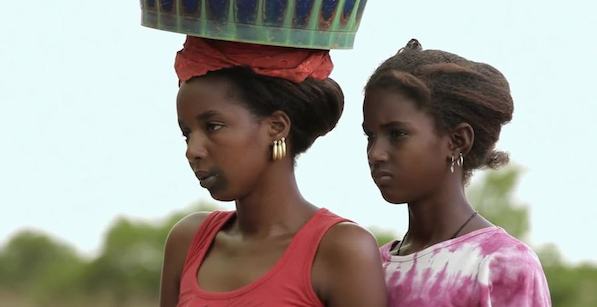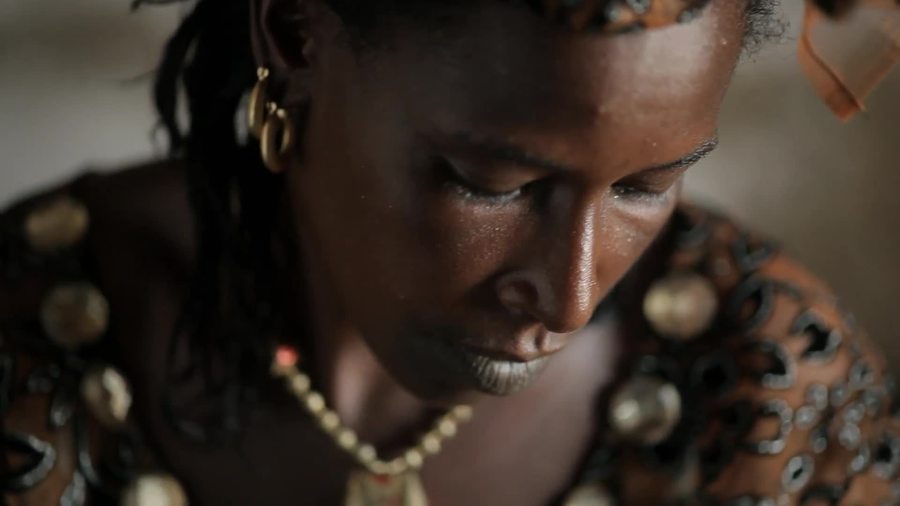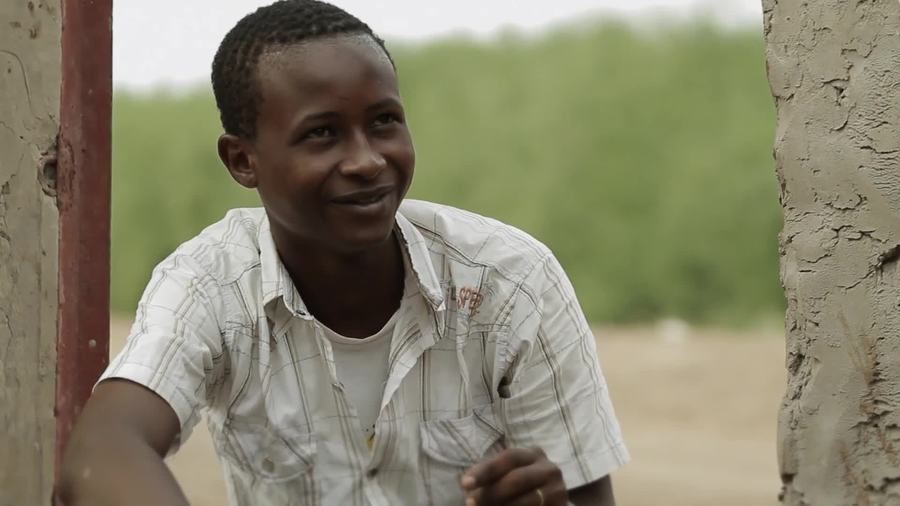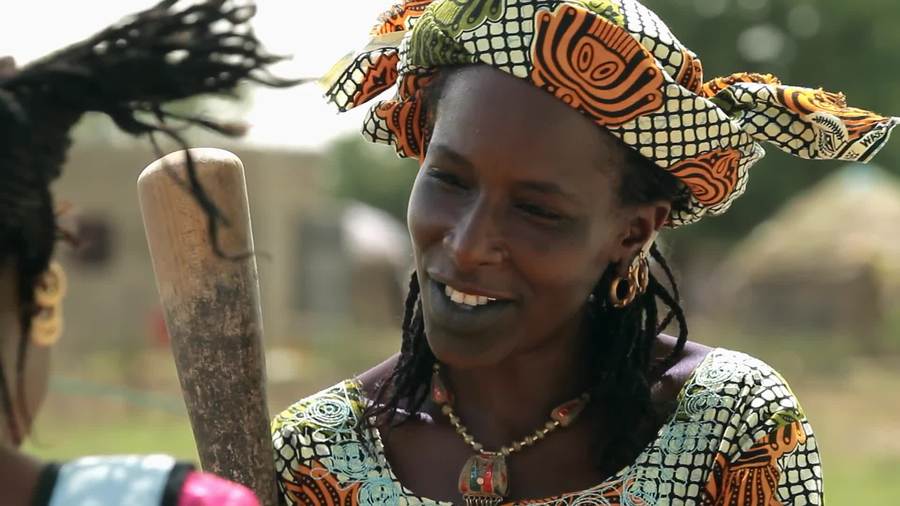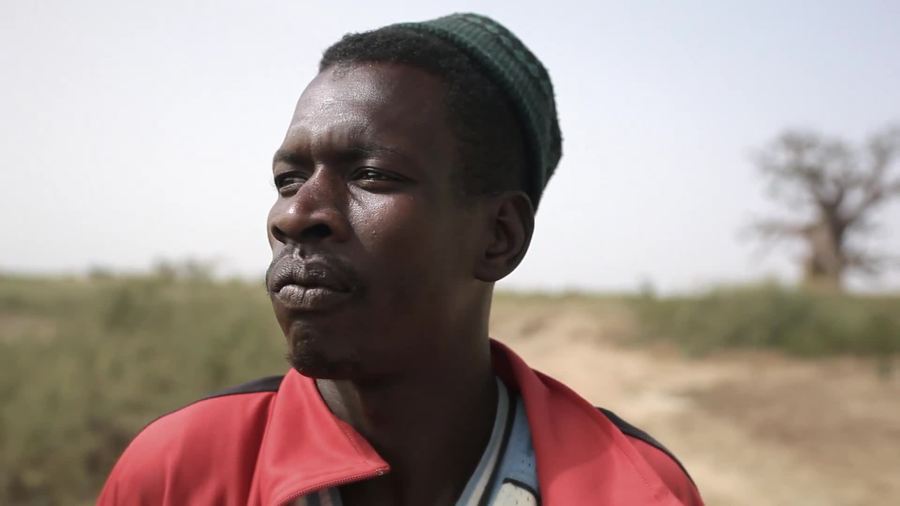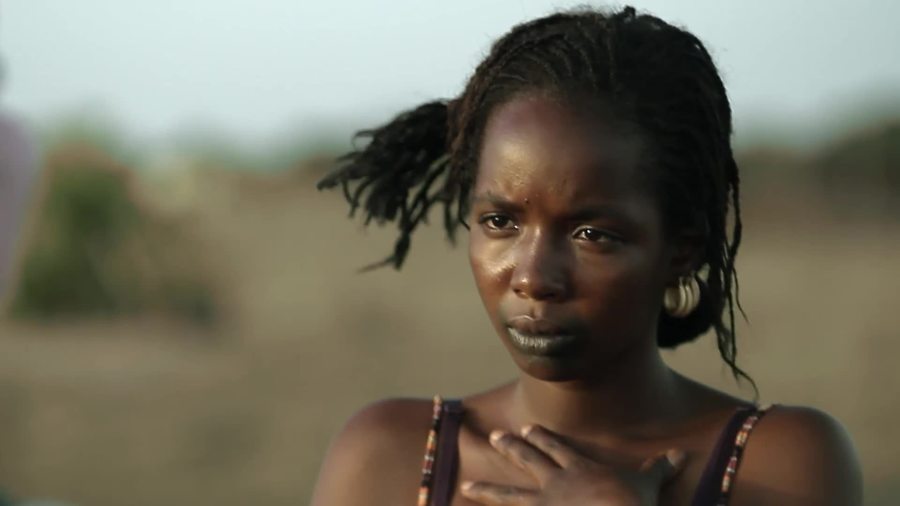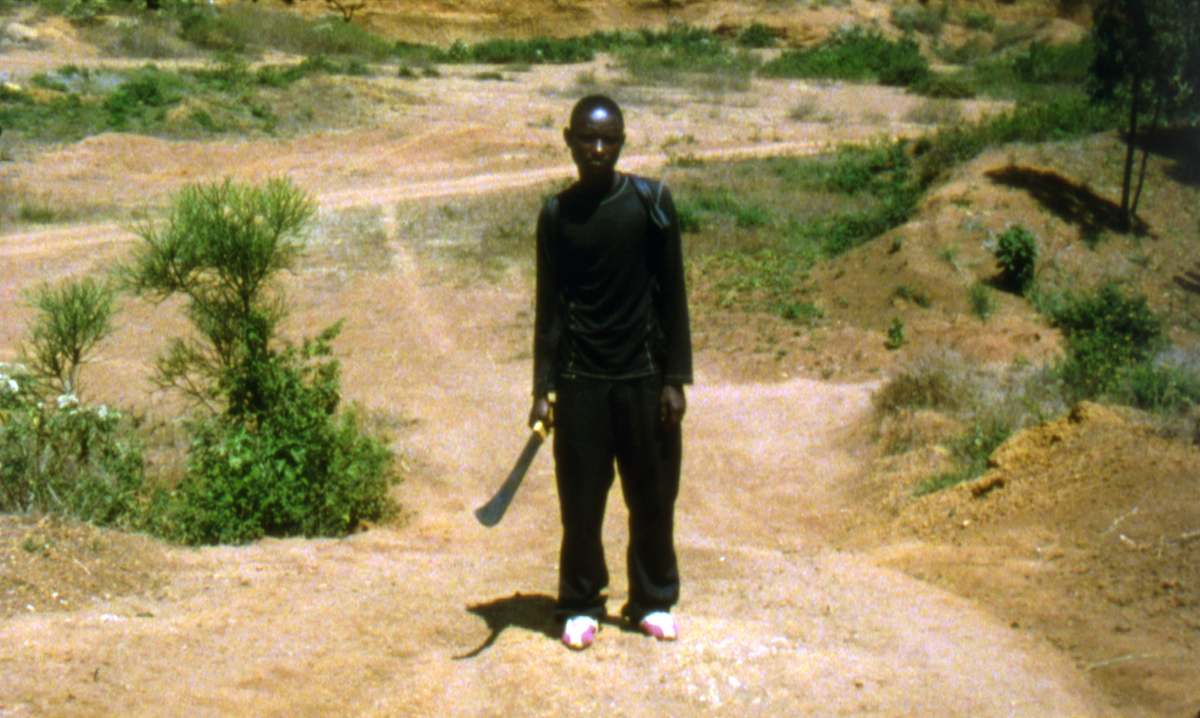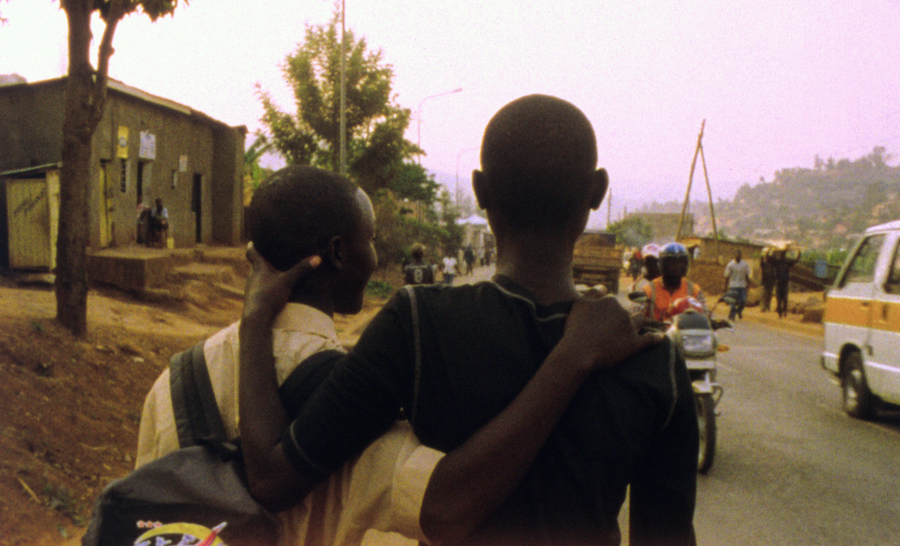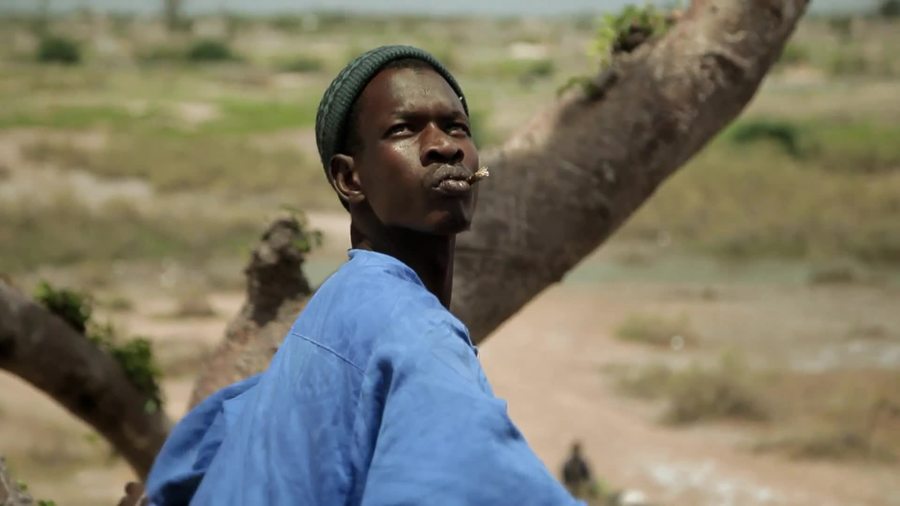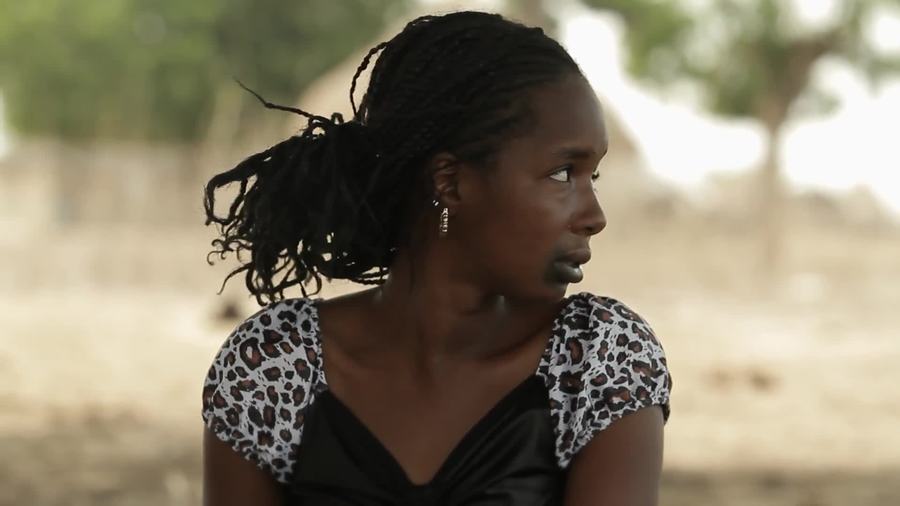Jeremy Teicher‘s Tall as the Baobab Tree (2012) boasted its U.S. premiere at the 56th edition of the San Francisco International Film Festival (SFIFF), as part of that festival’s Youth Education Program. Joanne Parsont—who then ran that program for the San Francisco Film Society—synopsized in her SFIFF program capsule: “While most American kids might consider school a daily chore that they’re forced to endure by their parents, there are many parts of the world where attending school is a distinct privilege, and education may not always be a parent’s first priority.” Such is the case with Coumba and her eleven-year-old sister Debo (played by actual sisters Dior and Oumul Ka), the first in their family to attend school in the nearby city. But when an accident threatens the family’s livelihood, their father decides to sell Debo into an arranged marriage, inspiring Coumba to devise a secret plan to save her sister.
As Filmmaker‘s Brandon Harris dispatched from the 2013 Rotterdam International Film Festival: “It’s been an especially bogus year on the ‘privileged white filmmakers going to far-flung locales and making mildly exploitative movies about impoverished indigenous people (or bayou people) front,’ especially when there’s kids involved, but Jeremy Teicher’s Tall as the Baobab Tree puts your fears to rest about its intentions very quickly. The twenty-four-year-old New Jersey-bred filmmaker’s debut is a smart, rhythmic and altogether respectful look at the attempts of two young women to self-actualize in a rural Senegalese village.”
Jeremy Teicher studied film and theater at Dartmouth College and first went to Senegal when he was nineteen to work on a promotional video for an NGO to promote digital literacy. Inspired by the people he met, he went on to make a short documentary, This Is (2011), which was nominated for a Student Academy Award. That short inspired his first feature, Tall as the Baobab Tree, which began production when he was just twenty-two. It won the Doha-Giffoni Best Feature Narrative award at the Doha-Tribeca Film Festival, an award selected by a jury of high school students from around the world. In July 2013, Teicher was named one of Filmmaker Magazine‘s 25 New Faces of Independent Film. My thanks to Jeremy and his “partner in crime,” co-writer Alexi Pappas for taking time to sit down with me in the coffee shop of New Cinema to discuss their debut feature.
Michael Guillén: Can you speak to the genesis of this film and its necessary collaboration with its Senegalese subjects?
Jeremy Teicher: Tall as the Baobab Tree is the culmination of now over five years of work, collaboration and relationship with Dior and Oumul Ka and this group of students who live in this village in Senegal. It started when I was a junior in college studying film. I had an opportunity to travel to Senegal with an NGO, an educational group, to make a video for them. Before this, I had no experience in Africa or with African cinema or documentary; but, I took the opportunity. When I was there for this two-week trip, I met this group of ten students who were the very first kids in this village to ever go to school. Before them, never in the history of any of their families was there ever a history of education. That was really interesting to me because—as a storyteller and filmmaker—I was interested in coming-of-age stories, mostly in American films, but here there was quite a unique and powerful coming-of-age story that engaged me personally.
I did some research when I got back home and found that all the media that was being made about education in rural Africa were tear-jerking efforts that induced pity for everyone on screen, whereas I had felt inspired by meeting this group of students. I got funding to go back to do a documentary with them because I felt that there deserved to be another voice to show how determined these students were despite the challenges they faced, and how optimistic they were about their future. In the course of making that documentary, this story about early marriage in the village emerged; something which I knew nothing about either. That documentary This Is found a great audience and did well here in the U.S. and from that I was able to get the funding and the support to continue my collaboration and turn some of their real stories into the plot of Tall as the Baobab Tree. Alexi helped me condense real anecdotes from the documentary into single characters within a plot and helped me develop the emotional arc of the story.
Guillén: Alexi, were you part of the making of the documentary as well?
Alexi Pappas: I knew about the documentary and its development, but I didn’t come on board as a collaborator until this narrative fiction.
Guillén: Speak to me about the baobab tree and the traditions around that.
Teicher: In the first montage we see the feeding of the cows. That montage moves a little fast, but you see the baobab leaves falling and the herd gathering around the base of the tree where they eat those fresh leaves. Villagers climb up those trees and chop down those leaves. Baobab trees are huge, hundreds of years old, with so much tradition and spirituality tied into them. They’re quite a visual fixture as well. For me, in picking the title of the film for instance, they spoke to the permanence or non-permanence of tradition and change.
Guillén: How did you go about casting the film and what was it like for you directing non-actors?
Teicher: The casting started with the initial first generation students that I met when I first traveled to Africa at nineteen. They were probably sixteen or seventeen. Dior, Oumul and anyone who looks to be around that age in the film were the kids I worked with from the get-go. They were my champions. Without their passion, these projects wouldn’t have continued. I knew that Tall as the Baobab Tree would start with them and I knew that Dior playing Coumba would be the main character. She has a little sister, which was perfect, so that was an easy casting choice. To cast the rest of the family, we had informal auditions in the village. Everyone who came out to audition had known each other their entire lives and everyone’s role in the film was close to their real personalities and roles within village life. As the director, I was looking for people who were outgoing and energetic enough to let their guard down, knowing that there would be a camera there. The script that Alexi and I wrote didn’t have lines of dialogue. It was more of a fifty-page detailed synopsis with the beginning, middle and end of each scene and the key moments that needed to happen. We developed the script with the students and their actual words were improvised. We would have group discussions at the start of a scene where I would give everyone their motivations—’Try to make her laugh. Don’t let her feel sad whatever you do.’—something like that. Then they would play the scene. So it was a matter of getting their motivations clear and then, of course—if there were any key plot points that needed to come up—making sure that they remembered those. Then getting them to work with my cinematographer Chris Collins to be as non-invasive as possible to play out as naturally as we could.
Guillén: This somewhat sad tale is held emotionally buoyant by the beautiful music you’ve incorporated throughout the film. Can you speak to how you selected that music and if it’s local to the region?
Teicher: Sure! I knew the music would be a huge part of it. The culture of the village is Pulaar. It’s not really in their tradition to be super expressive. Dramatics, yelling or raising voices, does not happen—their subdued way of talking is natural—but, I knew that as a film the music would pick up and be an emotional guide. There are a lot of local musicians in that area and we would pay them and record them playing for forty-five minutes with our boom. Sometimes it would be groups that were singing; other times, guitar players and drums. We mastered some of that raw music and put it into the film. I worked with a composer Jay Wadley in New York for most of the score. He studied the local music and then wrote a custom score for the film. We used musicians in New York to record that score.
Guillén: Has the film been shown locally in Senegal? If so, what was their reaction? Did they feel this narrative was an accurate portrayal of their culture or a Westernized portrait?
Teicher: The movie has been shown in the village. We haven’t had theatrical screenings throughout Senegal but last summer when we finished the final cut we set up a projector in the village and everyone came out to see it, which was great. It was so important to me from the beginning, from the documentary four or five years ago, that every element of the film was their voice, as much as possible. I didn’t want it to be Westernized at all. That was my challenge and how I responded with this work. I wanted to make as non-sensationalized a film as possible. For the documentary, the students could pick any topic they wanted to make a story about. For example, there was a whole section of that film that was just them cooking dinner and nothing else. That was wonderful because it was them showing their lives without any political twist. We tried to bring that into Tall as the Baobab Tree as much as possible, in terms of capturing the day-to-day village life.
Of course, we did get into talking about these cultural issues of tradition and change; but, everything that’s in the film is coming from the students that I worked with. That’s why the film doesn’t come right out and condemn early marriage—the central, social issue of the film—as forcibly as one might think it should. Usually in the West when we think about forced early marriage, we might react with shock, or disgust—’How can people do this to kids?’—but then, in the village when you talk to the students about it, they say their elders are making a big mistake by doing this and that they should all be going to school, but in the same breath they’ll talk about how proud they are to be from the village and how they don’t like to go to school in the city because they have to leave the village. So this subject is a grey area of loyalty to tradition while wanting to enter the modern world. That is the feeling I tried to put into the film. I guess since I am a Western person who directed it and oversaw the editing, it’s debatable how much of my personal opinions made their way into the film; but, I tried as much as I could to have the film be a window.
Guillén: I imagine you’ve kept in contact with these kids?
Teicher: Yeah! I’m still in touch with them. Some of the older kids have cell phones so I can call them every now and then. Mostly I’m in touch with the school teachers: the school principal, who plays the principal in the film, and the hotel owner who is played by one of the teachers. We’re in touch by email regularly.
Guillén: How was the village compensated for their participation in your film?
Teicher: We brought money into the local school. We worked that into the production budget from the get-go. Everyone was paid. The way the film was financially structured was that we received fiscal sponsorship from the non-profit I originally worked with, so—as the film makes its money back—some of it goes to the local school and some of it goes to support this educational NGO. Hopefully, as the film has success, they’ll feel a benefit directly in the school, if not this specific village.
Guillén: Were you influenced much by Senegalese film?
Teicher: I, of course, have seen some Sembène. Unfortunately, I haven’t seen contemporary films—let’s say from this year—coming out of Senegal. Sembène tends to be more cynical than I wanted to be with this film. I wasn’t picking up any of those feelings from the kids that I was working with. The film that most influenced me in making Tall as the Baobab Tree was Munyurangabo by Lee Isaac Chung. Narrative has been my interest throughout, even when I made the documentary. I thought narrative could reach the emotions of this issue. I didn’t know how to begin until I saw Munyurangabo. Lee Isaac Chung filmed it in Rwanda in 2005 on a super low budget, three-person crew, using real locations and non-actors. It was an amazing story that made it to the Cannes Film Festival.
Guillén: It’s interesting that you reference Lee Isaac Chung’s Munyurangabo. I spoke with him when his film screened at the Toronto International. Both of your films pose a problematic in terms of the programming of national cinemas, specifically African cinemas, within film festival culture. At a time when so little African cinema is being programmed in international film festivals, how do you situate yourself within that predicament?
Teicher: It is a hard thing. I feel like my movie is an African movie. If I wasn’t there in that village working with these kids to bring their voices out onto the screen—because I know how to make a movie and I can access the financing to make a movie—who would? Does it make their story less legitimate because I’m the one who happens to be doing that? It’s almost unfair to delegitimize the film because I’m the one who made it. Frankly, the cultural difference between a villager and someone who has the know-how and financing to make a film from, let’s say, Dakar would itself be totally different from the villagers I was working with. The culture of the village is so radically different from the culture of Dakar. It would be more of a culture shock for someone from the village to go to Dakar than it would be for someone from Dakar to go to Manhattan. On the Excel lists of film festival programmers, all the check boxes would match up with a Dakar filmmaker, but would journalists be asking this question of that filmmaker?
Guillén: I feel my question is legitimate as it addresses what I’m configuring as the out-datedness of the concept of a national cinema within the international festival circuit. When I saw Munyurangabo in Toronto, I was struck by how it was the most African film in the entire program, yet Lee Isaac Chung was not only an American but an Asian American. I found this problematic and indicative that, perhaps, the category of a national cinema is capsizing in the face of—as you admit—necessary financing. When I spoke with Lee Isaac, he argued that what he was trying to do was to make a movie whereby he could train Rwandans to go on and make movies on their own. Do you feel that in working on this project with these Senegalese kids and exposing them to this platform of self-expression is going to help them continue in filmmaking or image-making?
Teicher: Yeah. It’s great what Isaac has done and the people he worked with have gone on to make movies. We worked with different sets of people, however. I don’t know so well exactly who he was working with, but my feeling is that the socio-economic situation of our art to our respective areas is very different. Ten to fifteen years ago there was no such thing as school in this village. What I saw, and why the school teachers were so excited to facilitate this project, was that—yes, the kids were passionate about having their voices heard and making a movie—but for the teachers it was proof to the villagers that schooling could connect these kids to the outside world. In that way, the documentary and this feature film contributed to the village by helping this particular school plant a stake in the ground. The principal’s main job has been convincing village parents to send their kids to school, which is not easy to do at all. That’s why we had so much support from him and the teachers.
I definitely think it’s important to have African filmmakers from Africa—I’m not downplaying the importance of that by saying that it shouldn’t matter that I’m an American who made this film in Africa—but Lee Isaac’s project and mine were different in that his was more cinema-focused from the get-go and mine was more educational and about the school.
Pappas: Yesterday Jeremy mentioned in a Q&A that in another five to ten years in this particular village the youth growing up there might not be so aware of what life was like before. That makes Tall as a Baobab Tree a timely project. I think it will serve the village well over time.
Guillén: It provides a certain ethnography?
Teicher: Right! That’s what the village elders were happiest about. They were glad that this record of this particular time in the village now exists. The village will never be able to go back to the way it was.
Pappas: I think they’re proud of where they have come from and where they are going; but, this project, this film, was the turning point for this generation of students that Jeremy has been interacting with. That’s what’s special about this film.
Guillén: So perhaps if in the future some journalist asks you the national cinema question, you can state that you weren’t trying to create a national cinema; you were trying to ethnographically capture a moment in time?
Teicher: To bring this around to your original question, yes, I think the kids who participated were really excited about the fact that they were actors and would do it again, but at the same time it’s not like they’ve emerged from this one cultural situation without reflecting back on it. For example, the younger sister Oumul Ka just dropped out of school and got married. So I think there’s a couple of steps to go before these kids can think about writing grants to fund films. There’s still a lot more fundamental work that needs to be done. Hopefully, making this film will serve a valuable purpose as people are struggling with going to school for the first time.
Guillén: And the nature of education is premised upon the concept of choice, in that people become more able to make informed choices because they have become educated. In terms of the writing, my favorite scene in the movie was the interaction between the mother and the daughter at the well. It’s a beautiful scene that encapsulates the thrust of your film. The mother states powerfully: ‘Don’t change your culture. Understand your culture.’ I think Tall as the Baobab Tree effectively represents that the mother is not unhappy with her lot in life and that, for her, there has been value in traditional ways. For starters, she has beautiful children.
Pappas: It was important to us for there not to be a pointed right guy wrong guy good or bad perspective, which was difficult for us in writing it because we’re used to the structure of most films leaning on such perspectives. As you said, it was important for us that the differing perspectives all have their own voice. That seemed reasonable.
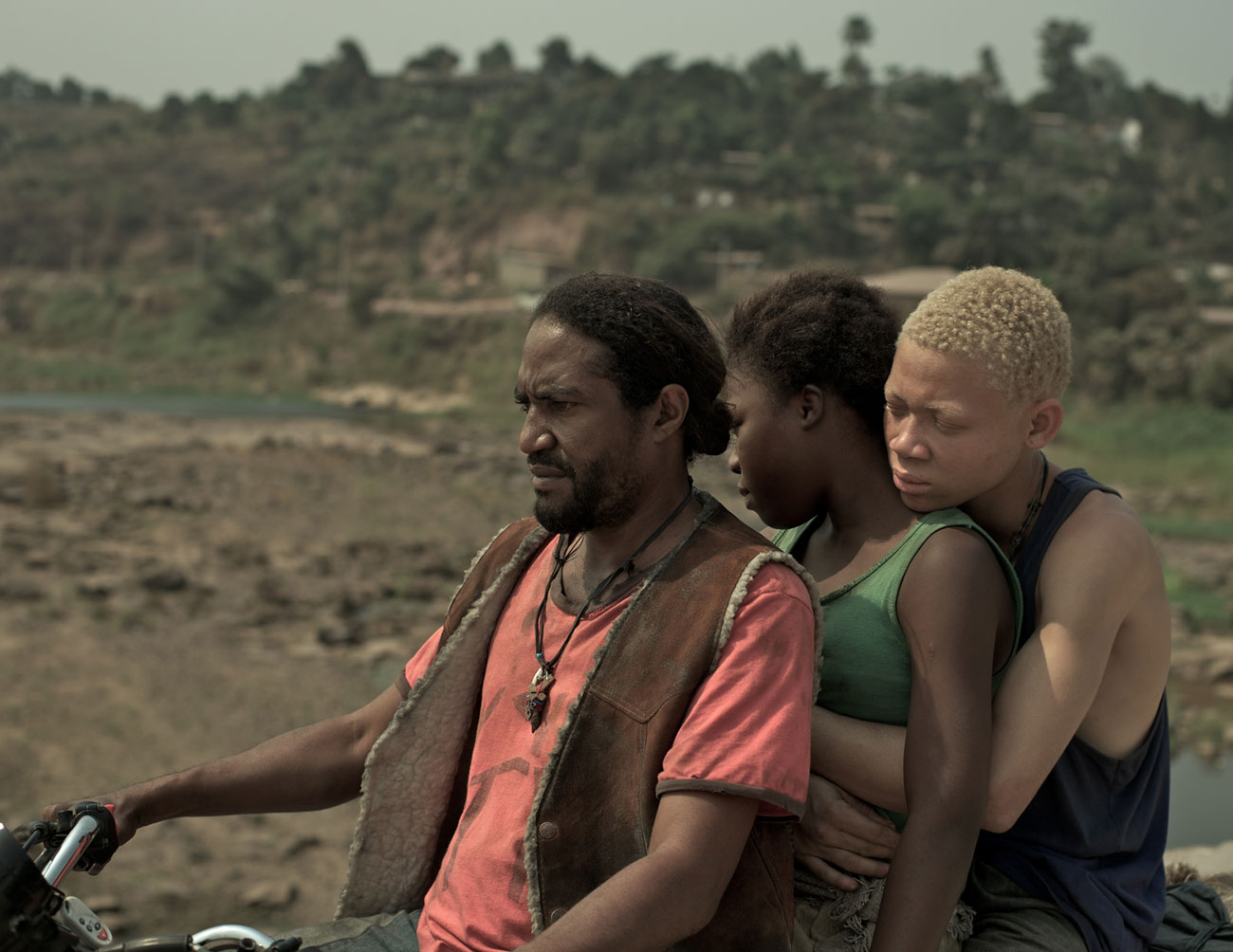
Teicher: I do appreciate what you’re looking at in terms of national cinemas in film festival culture. The guy in New York who translated Tall as the Baobab Tree is also one of the organizers of the ASA, the Association of Senegal and America, the community center for this huge African immigrant population in New York. He shows this film every weekend and says that—any time someone has immigrated from West Africa, or are second generation, or even someone who has spent time there—see the film, they’re so glad this film exists and that it’s not like War Witch with people with AKs (incidentally, the director of War Witch is Canadian). So many people appreciate that this film exists. Who cares who made it? Only festival people. What’s most touching to me is that people like my translator, whose kids are growing up American—all they know of Senegal is maybe when they took a trip there—and so he shows them this film to show them how their grandparents grew up. That’s valuable. I’m sure essayists could write persuasively about why it is important that I’m the one who made this film but, generally, among most people, it’s only when I’m at a Q&A that this seems to matter.
Guillén: I guess the gist of my argument is that nowadays a national cinema is a financial cinema, often a co-production between many countries and many influences, categorized within film festival culture as to a specific curation. For that matter, Senegal as an expression of African cinemas has a long history of co-production with France, so these considerations are hardly new.
I really liked how you responded to my earlier question about the music in that I suspect most American audiences don’t understand that other cultures express themselves through different emotional valences. They have a different way of expressing emotion so they don’t cater, let’s say, to melodrama as we are so used to in the West. Will there be a soundtrack?
Teicher: Yeah. I’m working on it with the composer. He just emailed me two days ago. It’s on the Internet and we’re going to put it on our website.
Guillén: To go back to the beginning of our conversation, what is it about coming-of-age stories that appeal to you? Why is this such a compelling dynamic in your artistry?
Teicher: My thesis film took place on an elementary school yard. My next film is about a teenager who’s training for the Olympics. Maybe it’s because growing up was not so easy for me? I felt I was very aware of growing up as I was growing up and then suddenly one day I was grown up. Right now that’s what I’m interested in. I grew up on fantasy books and video games and I didn’t have much of a social life. I mainly grew up in this massive multiplayer online video game world.
Guillén: As you came out of that insular world and began connecting to the outer world through your education and your filmmaking, were there other coming-of-age narratives that spoke to you about your own experience? About your own transition?
Teicher: I guess you could say that most of my desert island films are classified as coming-of-age films, even if not so much happens in them, like Richard Linklater‘s Dazed and Confused. I can watch that film over and over again. Coming-of-age stories are great at capturing a moment in time and I don’t think that coming-of-age stories necessarily have to be about adolescence. I think you can have a coming-of-age story at any age. Perhaps coming-of-age stories are just a type of genre of films that exist to capture a feeling of a place and a time, which is what we were trying to do with Tall as the Baobab Tree. Dazed and Confused captures the last day of high school. A movie that’s been on the circuit this year—Eliza Hittman‘s It Felt Like Love—does a great job of capturing sexuality among pre-teens. There are films that are trying to be snapshots. Even Woody Allen‘s Annie Hall you could say is a coming-of-age film because it captures that relationship in that special way that Woody Allen captures relationship.
Guillén: Which leads me to say that coming-of-age films that appear to be about the experiences of individuals, are often collectively-shared experiences. We all have memories of our first sexual stirrings, our last day in high school, and relationships. In other words, if a filmmaker does a coming-of-age film well—as you have with Tall as the Baobab Tree—you capture a culture that is coming of age.
Teicher: Right.
Guillén: So will the two of you be working together again on this project about the young person training for the Olympics?
Teicher: It’s about a young woman. Alexi is co-writing, and is going to star in it as well, as a lot of it is actually based on her own experiences. She ran in the Olympic trials in 2012. The subject of the film now lives in Eugene, Oregon, training for 2016. Her’s is an interesting subculture that will make a great lens to talk about American culture today. We’re excited about that.

